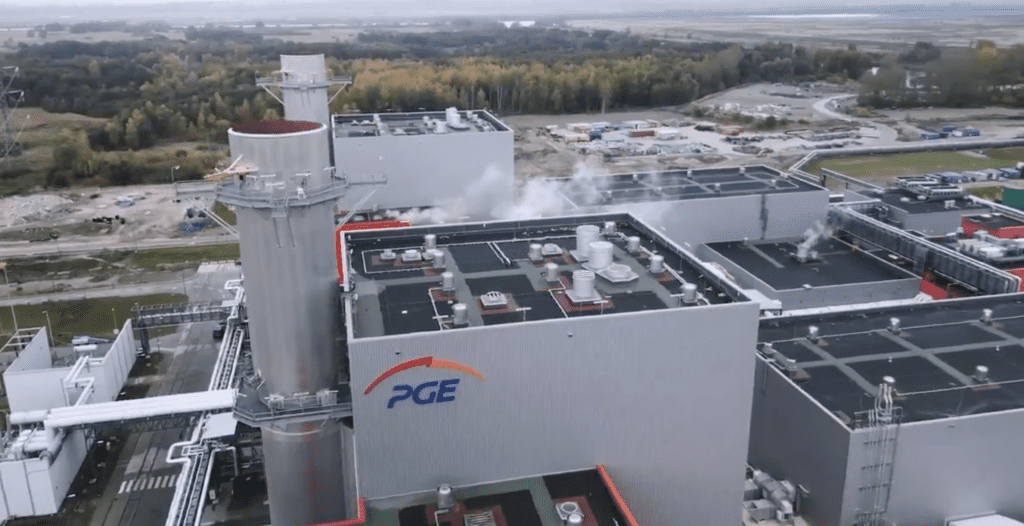State-owned PGE, the most significant electricity producer in Poland, announced that the 1,366-MW PGE Gryfino Dolna Odra power station has commenced commercial operations. This facility is now the country’s largest gas-fired power plant.
Officials on Nov. 8 announced that the station will contribute approximately 5% of Poland’s electrical energy. PGE representatives mentioned the plant is “one of the cutting-edge in Europe.” The investment “will enhance Poland’s energy security and ensure a stable energy supply for over 3 million households,” stated Dariusz Marzec, PGE’s CEO, during Friday’s inauguration event.
The PGE Gryfino Dolna Odra power station signifies an investment of over 3.7 billion zloty ($915 million). It is situated in the West Pomerania region in northwest Poland. The facility comprises two units, each with a generation capacity of 683 MW.
PGE representatives stated that the plant’s nominal efficiency surpasses 63%. Officials asserted that it is at least 70% more efficient than older coal-fired units. Poland still derives nearly two-thirds of its electricity from coal combustion, although the country has been shifting towards lower-emission energy sources in recent years, including nuclear.
The new plant “has been engineered to comply with the most stringent emission standards,” according to PGE. The plant has an emission rate estimated at 330g carbon dioxide (CO2) per kWh of produced electricity, which is nearly three times lower than that of coal-fired facilities.
Miłosz Motyka, the nation’s deputy climate minister, stated that the new facility will “not only directly impact the stability of the electricity system, i.e., safety, but also represents another step in the transformation of our economy.”
“Gas investment is a crucial element of the energy transition and the move towards climate neutrality,” remarked Robert Kropiwnicki, deputy minister of state assets. “We are continually expanding the RES [renewable energy] system.” Kropiwnicki acknowledged, however, that renewables “require parallel stable energy sources operating as a base, and currently, there is no more flexible capacity than gas capacity.” Renewable energy constituted approximately 26% of Poland’s power generation in 2023.
In the past week, Poland was required to import energy from neighboring countries, including Germany, Sweden, and Ukraine due to insufficient wind resulting in a drop in power generation from wind turbines, according to Business Insider Polska.
Polish government officials have stated they support a strategy to phase out coal-fired electricity generation and decrease carbon emissions, pledging support for the advancement of renewable and nuclear energy. The country currently has no nuclear power plants, and officials have indicated it may likely take another decade before any reactors are operational in Poland.
Natural gas, meanwhile, is anticipated to increase its share of the nation’s energy mix from roughly 8.5% last year to as much as 31% by 2030, according to the Polish Economic Institute.
—Darrell Proctor is a senior editor for POWER (@POWERmagazine).

